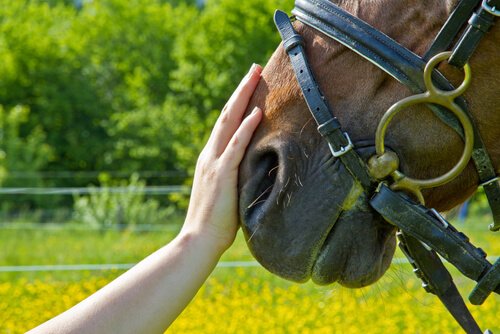6 Benefits of Equine-Assisted Therapy

Equine-Assisted Therapy is a relatively new trend. In 460 BC, Hippocrates spoke about the benefits of horses in solving health problems. However, it wasn’t until the 60s when people started using it as a form of rehabilitation.
When riding a horse, the patient begins to stimulate areas of their body that they had never exercised before. This enables them to improve their balance and mobility and opens up an incredible communicative response in the riders.
The patients don’t have to ride in a conventional position. They can be sitting back to front, standing up, or in several other positions. The rhythm of a horse’s trot is similar to the movements of the pelvis when walking. This is why equine-assisted therapy is perfect for people with reduced mobility.
Equine-assisted therapy is also highly recommended for people with autism, Down syndrome, sclerosis, cerebral palsy, and many other similar conditions. We should, however, keep in mind that this is an alternative therapy that should always go hand in hand with medical treatment. If this isn’t the case, then it will be difficult for us to notice any improvement.

Equine-assisted therapy
Animals often create a special bond with humans and this is especially true with horses. The nonverbal communication between the person and the horse strengthens the emotional bond that is created. Words aren’t needed for them to be perfectly in tune with each other. Emotions find space to flow and the relationship between them creates a love and understanding that is often indescribable.

Physical exercise
During equine-assisted therapy, the patient exercises and uses many different muscles in their body. Balance, strength, and dexterity are essential. Also, the patient should always be accompanied by a person who is attentive at all times. This therapy promotes joint mobility and also strengthens the abdomen, buttocks, calf muscles, and arms. It’s also an excellent therapy to strengthen the spine.
Another advantage is that the body temperature of the horse helps the rider relax. All these benefits will surely make us curious enough to learn a little more about it. It’s such a complete and highly-recommended sport because of this.
“It is noble, strong, sensitive, majestic and perceptive. The horse teaches all those who know how to observe.”
-Gabriel Oliverio-
It improves self-esteem
Having therapy with horses helps people with any type of disability feel useful. Animals don’t judge, mock, nor criticize. They treat humans equally, without distinction. They also know how to be thankful for any show of affection and love.
Equine-assisted therapy acts as a catalyst for more complex emotions. The love and understanding that an animal can give us are sometimes much more enriching than what some people can offer. This is something that anyone who has lived with an animal knows.
It increases attention span
This therapy improves concentration and attention, something that is really valuable in people with ADHD. The patient focuses on the relationship with the horse, thus increasing the spatial-temporal domain and promoting pre-operative thinking.
Of all patients with ADHD, it’s especially good for children. Training and increasing their capacity to control and maintain attention is important. This is also true if the effects achieved in horse-assisted therapy are to be applied in their education. On the other hand, at a sensory and cognitive level, it increases reflexes and stability.

It relaxes and de-stresses in equal parts
This type of therapy is a great exercise for freeing the mind from day-to-day stress. Many psychologists recommend it in order to deal with anxiety and stress problems. In the same way, it’s also used in some cases of anorexia and bulimia. It also helps people relate to other people who are outside of their usual context. It improves the self-control of emotions and teaches patients to express what they’re feeling in an appropriate way.
In contact with nature
The patient doesn’t feel that they’re in a very formal or artificial place as they may feel in a psychologist’s office. Doing therapy with horses allows them to be outdoors. These natural surroundings give the patient the opportunity to broaden their senses. This, in turn, increases their well-being.
The contact with nature is very therapeutic and allows the patient and animal to interact in the same surroundings. Nowadays, many people practice it around the world. It’s very widespread, thanks to its innumerable benefits. However, you should keep in mind that it must always go hand in hand with specialized treatment.
Recommended bibliography
Zamarra San Joaquín, M.P. (2002). Assisted Therapy for Pets. Well-being for Human Beings.
Barbados Sánchez, Alejandra. (2016). The Effectiveness of Animal-Assisted Therapy in People with Disabilities. University Institute for Integration into the Community. Salamanca.
This text is provided for informational purposes only and does not replace consultation with a professional. If in doubt, consult your specialist.








